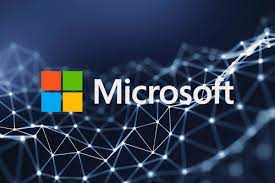For over four decades, the "Blue Screen of Death" (BSOD) has been a dreaded sight for Windows users, signaling a critical system error that forces an abrupt restart. But now, Microsoft is retiring this iconic blue screen and replacing it with a modern alternative: a black screen. This change is part of Microsoft's "Windows Resiliency Initiative," aimed at improving the operating system's robustness and security.
The new black screen, sometimes referred to as the "Black Screen of Death," will present a simplified user interface. The infamous frowning face and QR code are gone. Instead, the screen will display the stop code and the faulty system driver, which Microsoft says will allow IT administrators to more quickly identify the cause of the crash, and help users troubleshoot errors more easily. Microsoft aims to provide clearer and more concise information. The updated UI improves readability and aligns better with Windows 11 design principles.
The original BSOD has been around since Windows 1.0 in 1985. It appears when Windows encounters a critical error it can't recover from. These errors can stem from various sources, including hardware failures (like faulty RAM or damaged hard drives), driver conflicts, corrupt system files, software incompatibilities, malware, or even overheating. In the past, incompatible DLLs or bugs in the operating system kernel could also cause BSODs.
With the new Black Screen of Death, Microsoft is also introducing a "quick machine recovery" (QMR) feature for PCs that cannot restart successfully. This feature aims to automate fixes and quickly restore affected devices to a productive state without requiring complex manual intervention. The goal is to reduce recovery time following a PC crash to approximately two seconds.
The move to replace the BSOD comes after an incident in July 2024, where a faulty CrowdStrike update crashed computer systems worldwide, affecting about 8.5 million Windows devices. This incident, which caused widespread disruption across various industries, highlighted the need for greater resilience in the Windows operating system.
The new Black Screen of Death is expected to roll out to Windows 11 users later this summer with the Windows 11 24H2 update. While the color and some visual elements are changing, the "BSOD" acronym is likely to stick around. Netizens have reacted to the change with humor and a touch of nostalgia.
To prevent the Black Screen of Death and other system errors, it is important to keep your system updated, including drivers and Windows updates. Regularly check your hardware's health, especially RAM and hard drives, and scan for malware. Avoiding incompatible software and ensuring adequate storage space can also help. If you encounter a Black Screen of Death, try restarting your computer in Safe Mode and uninstalling recently installed programs or drivers. You can also use the Windows Memory Diagnostic tool to check the status of your RAM.


















